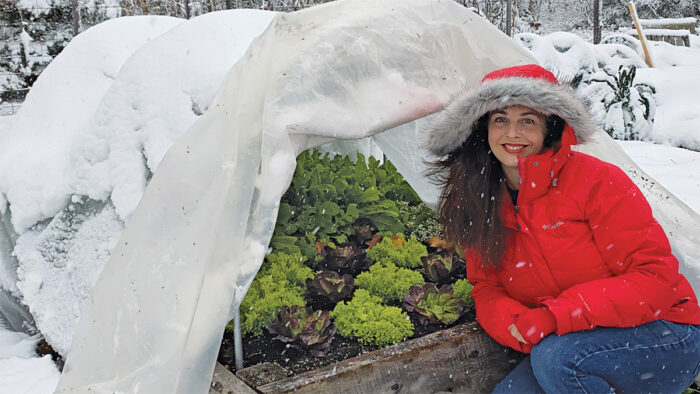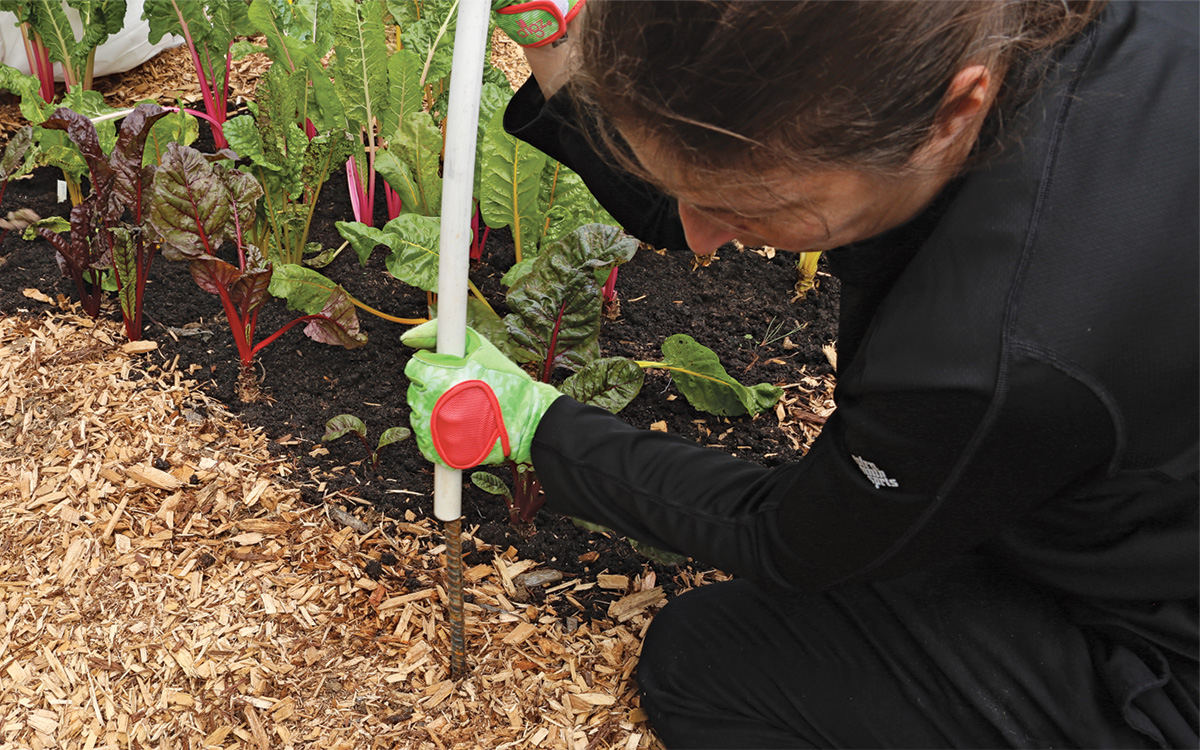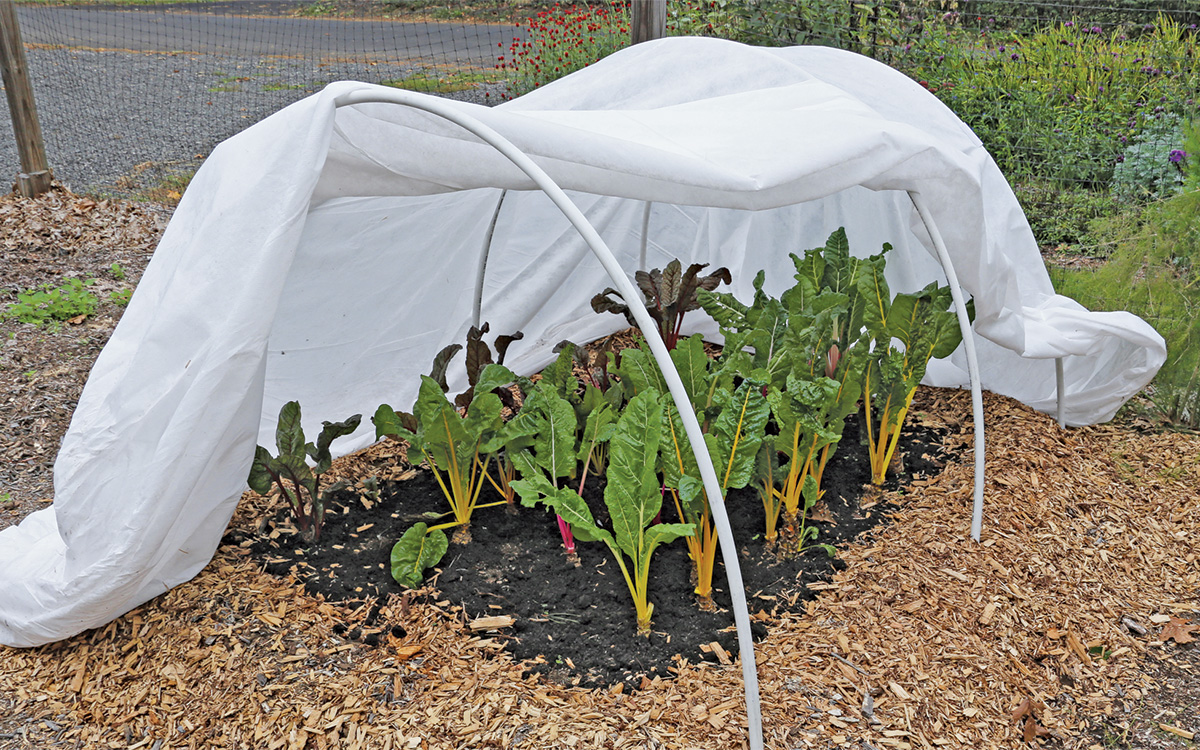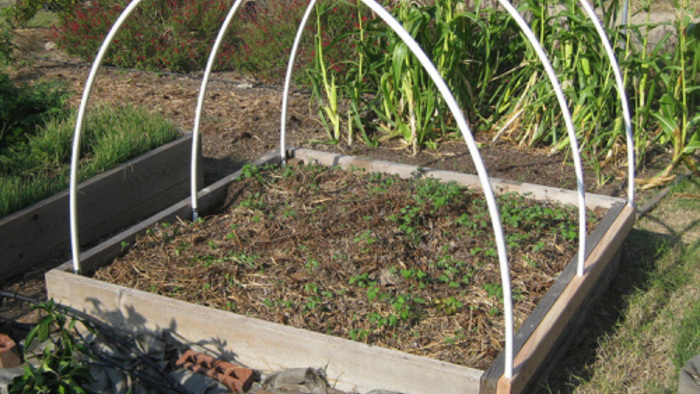
Building a mini hoop tunnel is a quick process with three easy steps.
1. Insert the hoops
In my raised beds, I insert the ends of my wire, metal, or PVC hoops 9 to 12 inches into the soil. If you are building mini hoop tunnels in an in-ground garden where the soil may be compacted, use 1-foot rebar stakes to secure the hoops. Pound the stakes into the soil, and slip the ends of the PVC hoops over them.
2. Cover the hoops
Drape the cover over the hoops, making sure it is long enough to cover the entire tunnel, including the ends. This is especially important if you are trying to keep insects or large pests away from your vegetables or protect plants from frost or cold weather. If you are building a summer shade cloth tunnel, however, the material doesn’t need to cover the entire tunnel.
3. Secure the covers
It is essential to secure covers to the hoops so that they don’t blow off in windy or stormy weather. I use snap clamps (pictured) to hold covers on my metal and PVC hoops. You can use other types of clamps or clips, or weigh the bottom of the covers down with rocks or pieces of lumber. For wire hoops I use binder clips to secure the covers, and I weigh down the sides and ends with stones.
4 great uses for a mini hoop tunnel
A mini hoop tunnel is a versatile structure that is quick and easy to build. Here are four ways to put it to use.
1. Frost protection
Use insulating covers to protect spring-planted crops from frost or to extend the harvest of cool-season vegetables in autumn.
2. Winter harvesting
Cover cold-hardy crops like spinach, kale, leeks, and winter lettuces with a poly-covered tunnel to harvest into winter.
3. Pest protection
To protect vegetables from insects and larger pests in spring, summer, and autumn, float insect-barrier fabrics, lightweight row covers, or bird netting on hoops.
4. Summer shading
It can be hard to establish successive crops in mid to late summer when the weather is hot and dry. Drape shade cloth on hoops over carrots, cabbage, broccoli, and lettuce to encourage good germination and reduce transplant stress. Remove shading once seeds germinate or a couple of days after transplanting to encourage quick, healthy growth.
Niki Jabbour, the award-winning author of Growing Under Cover and The Year-Round Vegetable Gardener, lives and gardens in Halifax, Nova Scotia.
Photos, except where noted: Carol Collins





















Comments
Log in or create an account to post a comment.
Sign up Log in